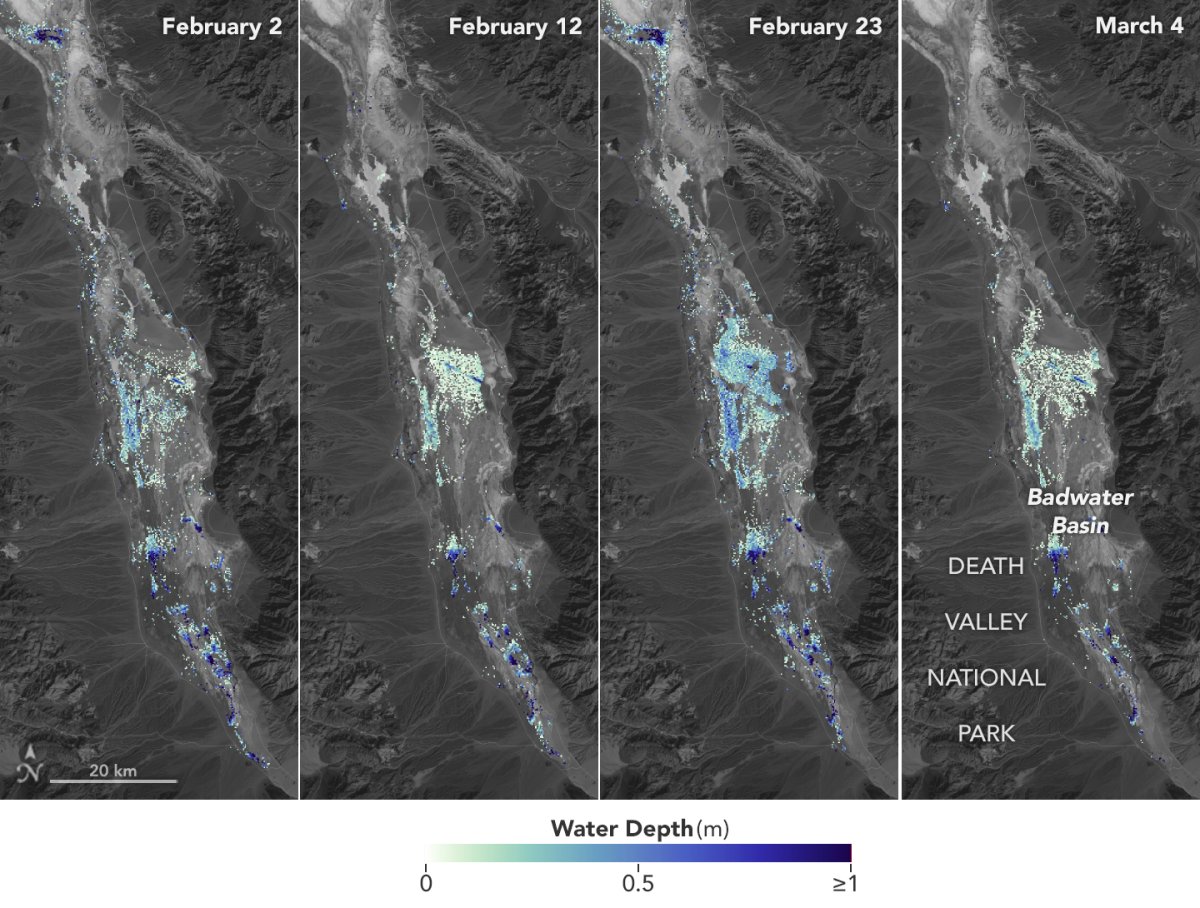Satellites have revealed the depth of the extremely rare Death Valley lake that emerged following a rainy winter.
Despite being the driest place in North America, a temporary body of water emerged in the Death Valley National Park due to torrential rainfall in late 2023. Called Lake Manly, it then became deeper after more rains battered California this winter.
The lake pops up only when the valley's Badwater Basin gains enough water to flood. The basin lies about 140 miles west of Las Vegas by road and is 282 feet below sea level, meaning it is susceptible to flooding when there is enough rainfall. Death Valley usually only receives a minuscule 2 inches of rain a year.
Earlier this year, however, following even more rain in the state, the lake became deep enough that officials opened it for visitors to go kayaking and boating.
Now, scientists have calculated the exact depth of this ephemeral lake, NASA Earth Observatory reports.
The analysis led by NASA calculated the depths over weeks in February and March, when the body of water was still present.

The researchers found that water depths ranged from about 3 feet to less than 1.5 feet over a six-week period, the observatory reported. A series of storms in early February caused the temporary lake to grow to around 6 miles long and 3 miles wide.
Between February 29 and March 2, strong winds shifted the water over a couple of miles. As the lake is temporary and shallow, this is not unusual.
Satellite images from NASA demonstrate how these depths changed over this period. Deeper areas of the lake are labeled in blue, while shallower areas are color coded yellow.
Water level data collected by NASA's Surface Water and Ocean Topography (SWOT) allowed researchers to reach their findings.
"This is a really cool example of how SWOT can track how unique lake systems work," Tamlin Pavelsky, the NASA freshwater science lead for SWOT and a hydrologist at the University of North Carolina Chapel Hill, said in a statement.
Lake Manly first formed following Hurricane Hilary on August 20, 2023. But it was only a small pool then, and it did not become a level worth studying until early this year.
The lake has disappeared now, and it is unlikely to reappear for a while, unless more unexpected storms head to California.
NASA's SWOT spacecraft works to measure water on the Earth's surface. It is able to form whole views of the world's oceans, lakes and rivers. The data it collects is highly useful for scientists studying clean air and water, extreme weather events and other environmental changes, according to NASA.
Do you have a tip on a science story that Newsweek should be covering? Do you have a question about the Death Valley lake? Let us know via science@newsweek.com.
Uncommon Knowledge
Newsweek is committed to challenging conventional wisdom and finding connections in the search for common ground.
Newsweek is committed to challenging conventional wisdom and finding connections in the search for common ground.
About the writer
Robyn White is a Newsweek Nature Reporter based in London, UK. Her focus is reporting on wildlife, science and the ... Read more
To read how Newsweek uses AI as a newsroom tool, Click here.








